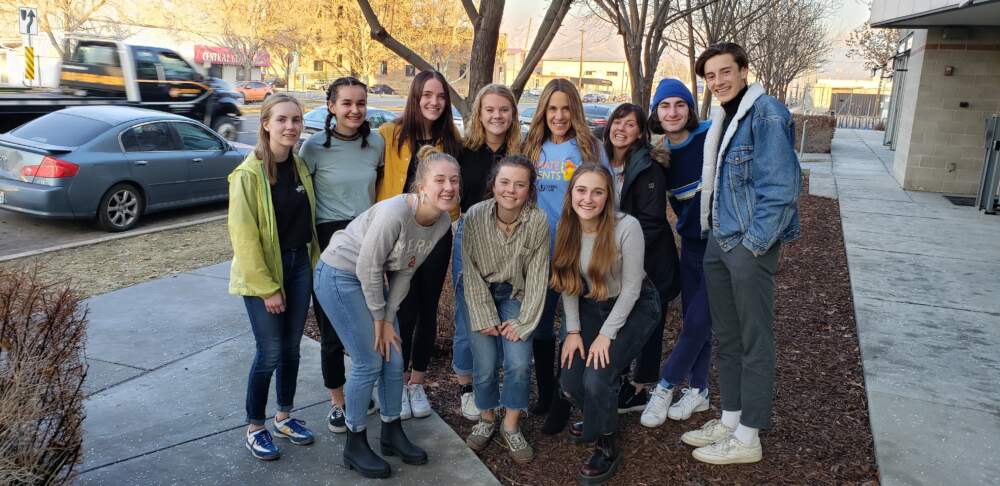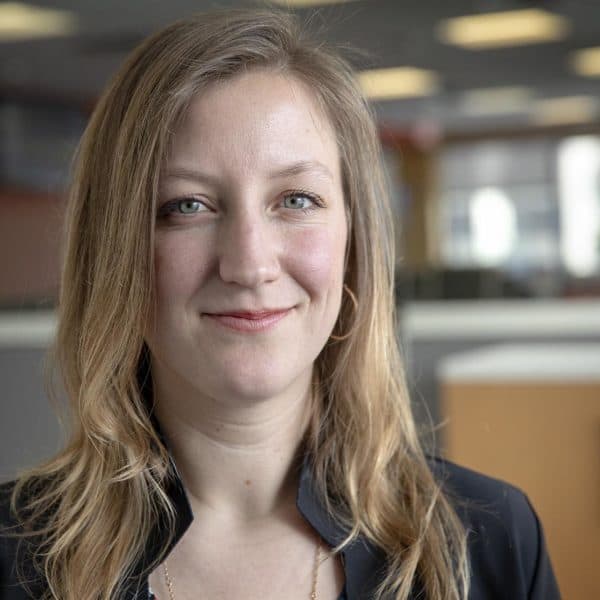Advertisement
Students challenged their school board to act on sustainability — and it worked
Resume
Salt Lake City schools are proof of the power of youth environmental activism.
The district is moving forward on ambitious sustainability renovations at a pace and scale advocated for by students and parents.
A man named Greg Libecci, the school district's energy and sustainability program manager, started this work. For years, he worked to engage people on efficiency, but his ideas were not always prioritized.
Then in 2020, students and parents came together through grassroots advocacy and supercharged his efforts. They rallied their school board to unanimously pass a clean energy resolution, and now the fruits of their labor are being realized.
Libecci says the school board approved a performance contract for $29 million dollars worth of work that has included retrofitting 34 schools that did not have LED lighting and new water conservation measures and solar panels on six schools.
The changes, he says, will put a substantial dent in greenhouse gas emissions.
“Our starting point, based on our energy usage back in 2018, was 32,000 tons of [carbon dioxide]. That basically was our footprint, and we've estimated that the measures we're implementing right now will get us a 25% reduction — or 8,000 tons of C02,” Libecci says. “That's equivalent to, from what I understand, 300,000 mature trees or taking 2,000 cars off the road.”
Andie Madsen, 21, is one of the students who pushed for Salt Lake City schools to adopt a resolution to go carbon neutral by 2040 and 100% clean renewable electricity by 2030.
Madsen, who graduated from high school in 2020 and just started law school, says she doesn’t think her younger self understood the magnitude of the steps the school board had to take for change to happen.
“It's been really great to see sort of the fruits of a couple of students' labor a few years ago turn into this action plan that is, I think gonna happen, by these huge goals that we've set,” Madsen says. “It's really incredible work, and I think it poses a model to other school districts and other industry businesses, even homes, that having these goals isn't that far-fetched if you have the right plans in mind.”
Madsen says she and her peers used a toolkit from the Sierra Club to help develop their clean energy resolution.
The students did so, even in the middle of the pandemic, because they felt it was the right thing to do to address climate change.
“The reality that we have now is gonna look differently by the time we're adults,” Madsen says. “And so we have a responsibility, not only to our generation but to the ones coming after us, to make these places we love a better place to live — and still livable.”
Madsen says she and her peers knew cost would be a primary hurdle for their campaign effort, so they focused on communicating the benefits of the goals they had in mind.
Libecci says he has found there are creative ways to fund this kind of work — and it can end up paying for itself.
“I really need this point to be driven home that utility savings from efficiency measures like LED lighting and by adding solar, the production you get from the solar also reduces your utility bills,” he says. “So you can combine the efficiency savings with the solar production and create a budget-neutral plan that gets all the work done under one umbrella and you purposefully allocate those savings and that savings is used to pay off the loan to get the work done now.”
Anisa Hemming, director of the Center for Green Schools at the U.S. Green Building Council, says school sustainability officers like Libecci help districts decrease their environmental impact but help increase awareness and environmental literacy.
“School systems are huge, complex organizations,” Hemming says. “They involve tens of thousands of people, sometimes hundreds of thousands of people, and no matter how much combating climate change is a priority for that system, if there's not someone in charge of moving the ball forward, it gets lost.”
Even in a time of competing goals and budgets, Hemming says she's seeing more schools hire sustainability officers, like Libecci, to do this sort of work.
“We started our network for these folks around 13 years ago, and at that point, we scoured the country and found about 25 or so people,” she says. “Now we have almost 300 people in the network, and those folks work at about 120 school districts.”
The Salt Lake City School District didn't even have a sustainability officer 15 years ago, until Libecci says he advocated creating the role for himself, after years of working in sales.
His early work focused on recycling and small lighting projects, but the students’ lobbying and creating the resolution really pushed the efforts further, he says.
In the future, Libecci has big hopes for how more schools can be reimagined to operate in a warming world. One elementary school has already disconnected the gas meter and boilers in favor of electric heat. Water heating and cooking needs will also be solved with electricity.
“We've completely eliminated combustion of natural gas on-site, and I see that as something that will be more and more the common place,” Libecci says. “That's my vision.”
Madsen says she also hopes others can learn from their efforts in Utah.
“I think that this started from a group of students who are passionate,” she says. “You, no matter who you are — a student, a young person, an adult, someone fully enveloped in their career, about to retire — anyone in any part of your community, I think that you have the ability to work with other like-minded folks to have sensible goals that incorporate decision making that looks to the future.”
This segment aired on September 7, 2023.

